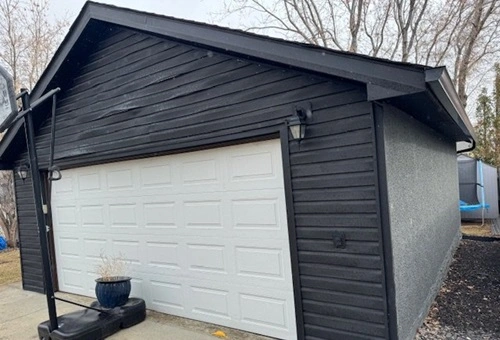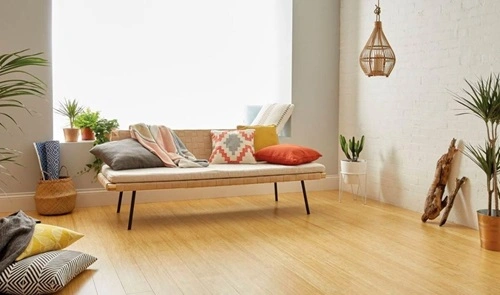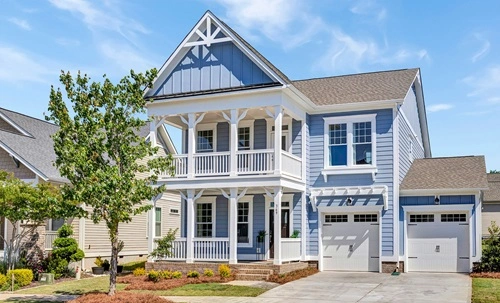Vinyl siding is one of the most popular exterior home materials in the United States due to its low maintenance, durability, and cost-effectiveness. However, as siding ages, some homeowners consider painting it as a quick refresh rather than replacing it.
While painting vinyl siding may seem like an affordable way to upgrade your home’s appearance, experts warn that it comes with serious risks that could lead to damage, warping, voided warranties, and high maintenance costs.
Before you pick up a paintbrush, here’s why you should never paint vinyl siding—and what you should do instead.
1. Painting Vinyl Siding Can Cause Warping and Buckling

One of the biggest dangers of painting vinyl siding is heat absorption, which can cause the material to warp, buckle, or crack.
- Vinyl siding is designed to expand and contract with temperature changes.
- Darker-colored paints absorb more heat, leading to uneven expansion and structural warping.
- Once siding is warped, there’s no way to fix it—you’ll have to replace it entirely.
According to the Vinyl Siding Institute (VSI), painted vinyl absorbs up to 20% more heat, significantly increasing the risk of warping.
2. Painting Voids the Manufacturer’s Warranty
Most vinyl siding manufacturers specifically prohibit painting in their warranties.
- If you paint your siding, the warranty is voided, meaning you won’t get financial help if the material fails.
- This could lead to expensive repairs that homeowners must cover entirely out-of-pocket.
- Even professional painters may not provide a guarantee for painted vinyl siding, as it’s difficult to predict how the material will react over time.
Homeowners should always check their siding’s warranty guidelines before making any modifications.
3. Paint Does Not Adhere Well to Vinyl
Unlike wood or brick, vinyl has a smooth, non-porous surface, making it difficult for paint to adhere properly.
- Over time, paint can peel, flake, or fade unevenly, creating an unattractive, worn-out look.
- This means frequent repainting is required to maintain the home’s appearance.
- Once you paint vinyl siding, there’s no going back—removing paint is nearly impossible, and replacing the siding becomes the only long-term solution.
Most professional painters do not recommend painting vinyl siding due to its low adhesion properties.
4. High Maintenance and Frequent Repainting Required
One of the main reasons homeowners choose vinyl siding is because it’s virtually maintenance-free.
- Factory-finished vinyl lasts 20-30 years with minimal upkeep.
- Painted vinyl siding needs repainting every 5-7 years due to fading, peeling, and weather damage.
- Dirt, mildew, and stains become more visible on painted siding, requiring frequent power washing.
Instead of reducing maintenance, painting actually increases upkeep and adds long-term costs.
5. Potential for Mold and Moisture Damage
Vinyl siding is designed with built-in moisture resistance, allowing rain and humidity to escape.
- Painting seals the material, trapping moisture underneath.
- Over time, mold, mildew, and rot can develop behind the siding.
- If moisture gets trapped, it can cause serious structural damage to your home.
According to the National Association of Home Builders (NAHB), moisture buildup is a leading cause of home deterioration, and painting vinyl siding exacerbates this issue.
6. Limited Color Options and Fading Issues
Factory-made vinyl siding is available in a wide range of UV-resistant colors that are designed to last.
- Painted vinyl siding is more prone to fading, especially in sunny climates.
- Lighter colors may turn yellowish, while darker colors may fade unevenly.
- Unlike wood or metal siding, vinyl cannot be sanded or refinished, making repainting the only option when fading occurs.
Instead of painting, homeowners should explore modern, pre-colored vinyl options that resist fading and maintain their beauty for decades.
7. Lower Resale Value and Curb Appeal Concerns
Painting vinyl siding can negatively impact your home’s resale value.
- Buyers prefer factory-finished vinyl over repainted surfaces due to the durability concerns.
- Many real estate experts discourage painting vinyl, as it can make the home look “patched up” instead of properly maintained.
- If a home inspector notices paint-related damage, it may raise concerns during a home sale.
According to a 2023 Zillow housing market report, homes with original, well-maintained vinyl siding sell for 10-15% more than homes with painted or modified vinyl.
What Should You Do Instead of Painting?
If your vinyl siding looks faded or outdated, consider these better alternatives instead of painting:
✅ Deep Cleaning: Power washing can remove dirt, mildew, and stains, restoring the siding’s original color.
✅ Vinyl Restoration Products: Professional-grade vinyl revivers can bring back lost color without painting.
✅ Siding Replacement: If your siding is old or damaged, replacing it with modern, fade-resistant vinyl is a better investment.
✅ Siding Covering Options: Some homeowners opt for decorative panels or cladding materials to update the exterior without painting.
FAQs About Painting Vinyl Siding
Q1: Can you paint vinyl siding at all?
Ans: Technically, you can, but it is not recommended. If you must paint, use light-colored, vinyl-safe paint and avoid dark colors that absorb heat.
Q2: What kind of paint is best for vinyl siding?
Ans: If painting is unavoidable, use a high-quality exterior latex paint specifically designed for vinyl. However, keep in mind that even the best paint won’t last as long as factory-finished siding.
Q3: How can I make my old vinyl siding look new without painting?
- Power wash the siding to remove dirt and mildew.
- Use a vinyl siding restorer to enhance color and shine.
- Replace damaged sections with newer, color-matched panels.
Q4: Will painting vinyl siding lower my home’s value?
Ans: In many cases, yes. Homebuyers and inspectors often prefer original, unpainted vinyl because it’s more durable and requires less maintenance.
Q5: How long does painted vinyl siding last?
Ans: Painted vinyl siding lasts 5-7 years before it starts peeling or fading. In contrast, factory-finished vinyl can last over 25 years with minimal maintenance.
Conclusion: Don’t Paint, Preserve or Replace
While painting vinyl siding might seem like a cost-effective solution, it comes with major drawbacks—including warping, peeling, high maintenance, voided warranties, and potential home damage.
Instead of painting, homeowners should consider power washing, using vinyl restoration products, or replacing outdated siding with modern, fade-resistant options.
Before making a decision, ask yourself: Do you want a short-term fix or a long-term investment? Because when it comes to vinyl siding, painting is rarely the right answer.



